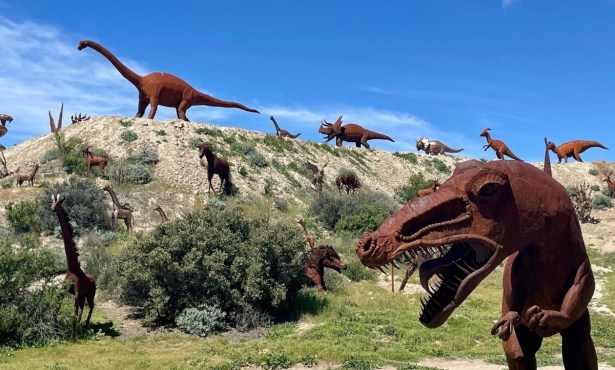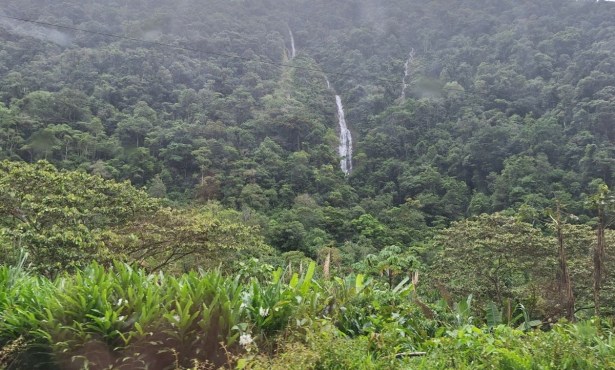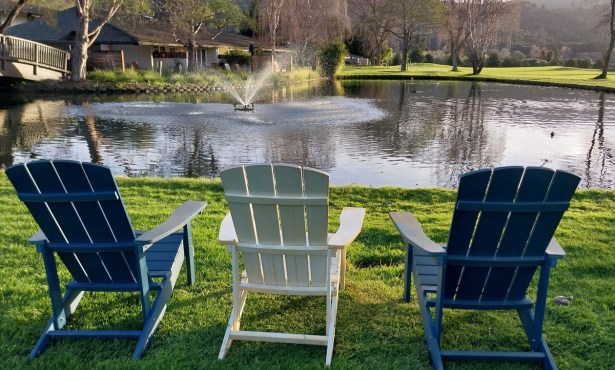The Rebirth of Christchurch
A Look at New Zealand One Year After the Deadly Quake

In February 2011, I was ticketed to fly into Christchurch, New Zealand, to begin a hiking vacation. Three days before my flight, a 6.3 earthquake fragmented the South Island’s largest city into an ugly landscape of dirt, rubble, and liquefaction. One hundred and eighty four people died. I decided to postpone my trip.
This past February I walked the South Island at last, immersed in landscapes that mirrored Alpine peaks, Alaskan fjords, rolling Big Sky ranges, tropical rainforests, and serene English countryside.
Then I came to Christchurch. From the air, the metropolis of 350,000 resembles a mini-L.A., low-slung and spread out from the Pacific Ocean across 550 square miles of estuarial plain. On the ground, the quake’s brutal damage spreads from the hard-hit central business district through the city’s eastern sprawl into the port town of Lyttleton and the posh suburbs of the Port Hills.
Founded in the mid-19th century, Christchurch was a well-planned grid of neo-Gothic stone-and-brick architecture, including the famed Christ Church Cathedral, the City Council buildings, schools, churches, museums, and more. Now the great majority of these landmarks lie in ruin, condemned to demolition. The cliché of a double-deckered bus tour offered a close-up of what’s been lost. Most of the major hotel and corporate office towers are down, or soon to be. The business district’s cordoned-off “red zone” has shrunk to one-sixth of its original size in a year, but it’s hard to see any sign of new growth. Everyone’s still digging out.
Even to a stranger, the sight of so much damaged beauty is painful. Yet patches of colorful tradition remain. A very English horde of youths in blue-striped blazers erupts from Christ College, a neo-Gothic private boys’ school located next to the city’s enormous swath of green, Hagley Park. A wonderland of mature trees shading the meandering Avon where tourists and locals punt in style, Hagley Park also boasts the Botanical Gardens’ display of roses, flowering shrubs, and trees imported from all over the world. Next to the Gardens, Canterbury Museum provides a fascinating exhibit detailing the quakes of the last 18 months and the almost 10,000 aftershocks that followed the gigantic tremors of February 2011. As part of the exhibit, the broken cathedral tower’s silver tip lies on display — or rather, it seems to me, in state.

Kiwi Ingenuity
Energy displaced has to move someplace and so the owners of shut-down shops, cafes, and restaurants created playful “Plan B” solutions to their dilemmas. New Zealanders are known for their forward-thinking, design-conscious mentality. After the downtown shopping mall was demolished, retailers conceived of a temporary mall made from brightly painted shipping containers spruced up with wood accents and glass doors.
While the new “Restart” mall houses only 10 percent of the original mall’s inhabitants, its stylish shops and cafes offer a festive ambience that attracts locals and tourists alike. At one jump-started café, the bohemian crowd is young, literate, and street-stylish. Life feels good. Few bars are open at night, but one young entrepreneur relocated to a car wash and now offers “jam jar” cocktails to a packed crowd.
Proprietor Liz Barry just celebrated the 25th anniversary of her fashionable restaurant and Christchurch institution, Strawberry Fare, despite February’s lunch-hour destruction of her original location. Only after 10 frustrating months of wrestling with her insurance companies did she and her son, chef and designer Aaron Lee, make the decision to abandon their old premises and set up shop in an empty spot across from Hagley Park.
“It’s really positive to be moving forward and our customers are delighted we’re open again. We’re lucky to be so busy,” said Barry while presiding over the lively crowd in a sleekly modern venue. Still, it’s been the most difficult year of her life. “Start-up costs were huge. The restaurant is running short-staffed and our former in-house bakery is now located 15 minutes away. More importantly, we have no insurance now. If we have another earthquake, we’re history.”
Barry’s loyal clientele may have been thrilled to see her reopen, but they bared their teeth when they noticed favorite items had been dropped from the customary menu. “I was surprised,” Barry said. “They’ve been very up front about telling us off!” Her conclusion? Beneath the city’s chipper “let’s get on with it” optimism, reserves of patience are running thin. People need a safe place to let off steam.

New Ideas for a New City
“Forever lost!” blared the newspaper headlines on March 3 after the Anglican Church decided not to rebuild Christ Church Cathedral. Emotions ran strong among residents for the need to restore familiar local landmarks.
Yet after the quake, when the city government launched a campaign to ask residents what kind of environment they would like to live in, the majority demanded a blueprint for the future, not a restoration of the past. Obviously the new city should be safe, but it should also be built using the best principals of sustainable design. Citizens urged input from the world’s best architects and urban planners. And everyone wanted more green: “A city within a garden.”
Plans for the central business district now sit on the prime minister’s desk in Wellington, awaiting action. They include a radical redesign borrowed from Seoul: turning the city’s river into a flowing centerpiece. Single-story cafes and restaurants would face onto the Avon amidst more abundant green zones while buildings would grow taller in direct proportion to their distance from its banks.
In the eastern suburbs, explained Lianne Daziel, liquefaction due to wetlands proximity damaged neighborhoods as much as the quake itself. Her red-zoned constituents would rather see their lost land and houses turned into a state-of-the-art green zone-cum-living monument than be sold to private developers and possibly rebuilt. Residents must move out by 2013 but a defiant few still live on their sunken property, posting signs to that effect.
The total cost of rebuilding Christchurch stands at roughly $25 billion, making it the third most expensive earthquake worldwide. “As a city we’re very well insured,” said Mayor Bob Parker. But money can’t speed time. Best guestimates for a new downtown skyline lie 10 to 15 years out. Police headquarters needs a new home. The convention center will be “deconstructed.”
“Even if we built one new building a week,” said Parker, “it would take us 30 years to recreate what we’ve lost.”
Meanwhile, residents live with the daily uncertainty of the “new normal.” Many adults have lost homes and jobs, not to mention places of worship. Children have lost their schools. People have become compulsive about visiting geonet.com, a website that provides real-time info on the latest seismic shocks in the Christchurch region, with charts detailing the last 24 hours, the last week, the last month, the last 18 months. I went online and found the graphs scary to contemplate.

Hope and Spirit
If a cathedral was the first building planned by Christchurch settlers, a sporting field wasn’t far behind. Rugby, the fiercest team sport of all, is dear to Kiwi hearts; many All Blacks, New Zealand’s national team, come from the region. Tragically, the grand AMI stadium, completed in 2009, was set to host seven of the September 2011 World Cup matches, but all of that was cancelled after the quake. Now it will most likely be demolished.
Still, the city has created a new vessel for its passions, a new home for its sportive soul. A quickly built temporary stadium costing $17 million will soon seat 17,000 rugby and cricket fans. That’s more like it, everyone agrees. It may take a decade before these plucky urbanites see their future environment take shape. In the meantime, they root for the home team. As a deadpan local wit would phrase it: Priorities first!
New Zealand Now
CITY: Christchurch may be a work in progress, but it’s very much worth a visit. For the latest info, see christchurch.nz.com.
COUNTRY: The rest of New Zealand, from rain-forested beaches to Southern Alps, remains gloriously pristine — ideal for honeymoons, family trips, or boomer birthdays. More expensive than Latin America but cheaper than Europe, the country remains a top vacation destination. Film director John Cameron has just plunked down $20 million for ranch property on the North Island. The smart money will visit soon, before China becomes New Zealand’s number-one tourist clientele. See newzealand.com.
TOUR COMPANY: If you’re interested in getting off the beaten path, I highly recommend the hiking, cycling, and combo tours offered by Active New Zealand. See activenewzealand.com.
GETTING THERE: As for flying there, rumor has it that Qantas will soon stop servicing Christchurch. Not to worry. Air New Zealand offers excellent service in its Premium Economy Class on brand new Boeing 777s. Your roomy, reclining cocoon comes piled high with blanket, pillow, beanbag footrest, and other amenities. The video system requires some mastering, but it’s awfully handy to be able to choose from over 200 movies and TV shows, then pause and restart the screen with the touch of your finger. No meal is served with less than five utensils and the food is delicious. See airnewzealand.com



